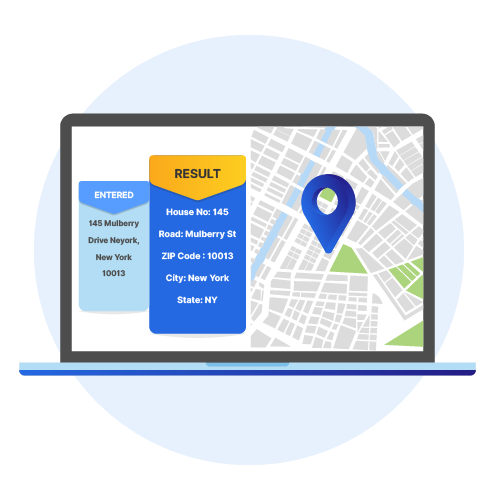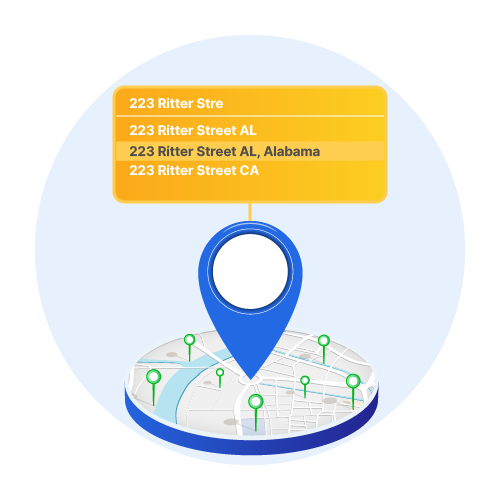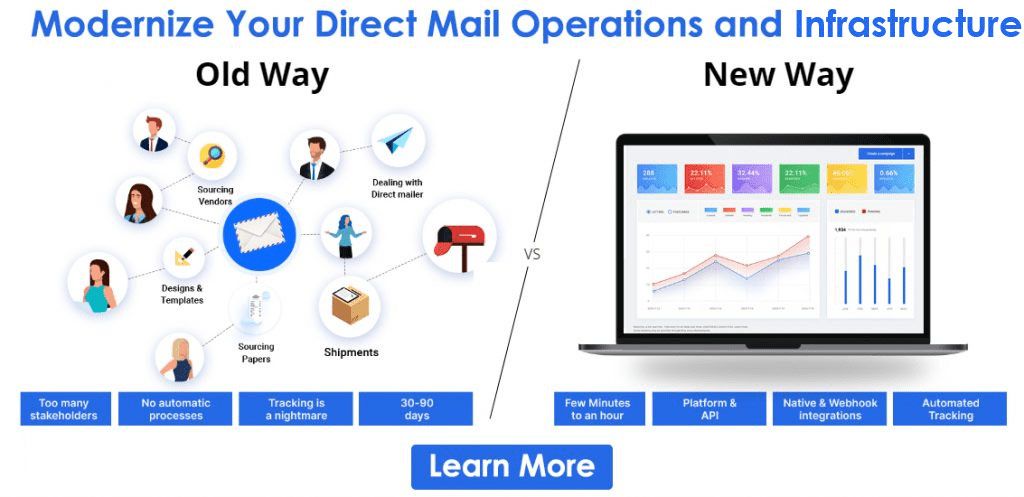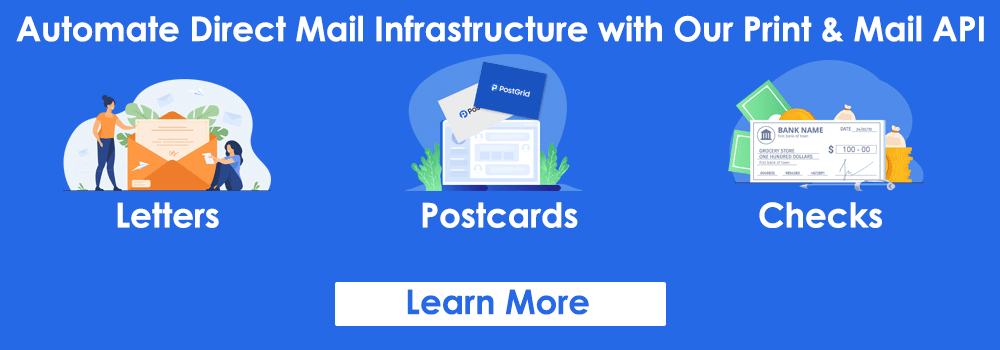Address Cleansing
Introduction to Address Cleansing
Businesses worldwide deal with oceans of data, and perhaps the most vital among these data, as far as businesses are concerned, is the customers’ data, namely their addresses. A company that sends out regular direct mails to its customers spends a great deal of time and money on it. Therefore, it is only natural that they want to ensure that their direct mails are indeed reaching their customers or target audience. Maintaining an accurate address can be a nightmare if you do it manually. It could take you hours or even days, and by the end, there is still no guarantee that there is no scope for error in it.

Apart from this, companies also deal with a large amount of data that may or may not be correct. Companies realize that the data in their hands also consists of the wrong one. The customer may have given a fake address because he/she doesn’t want to receive a mail, or maybe accidentally gave the incorrect address or made a mistake and mixed up the house number, or perhaps the address is just not registered yet. There are many ways you can get an invalid address in your database, and it may be hiding in a massive cluster of data, which is why businesses turn to address cleansing.
What is Address Cleansing?
In layman’s terms, address cleansing is the cleansing or validating of addresses to ensure that they are legitimate. Address cleansing is a process that involves standardizing, correcting, and validating a postal address to make sure that it is valid and deliverable. Before the address can be validated, it first needs to be structured according to the relevant country’s official postal format. Furthermore, you also have to ensure that the address is not missing any vital information. You must make sure that any missing information is added and also correct any incorrect information that you may notice in the address.
Once you have ascertained that the address is in the correct format for the appropriate country, you may then compare it against that country’s official address database. For example, the official address database in the United States is managed and controlled by the United States Postal Service (USPS). The addresses that have gone through the initial stages of “cleansing,” which is standardization and correction, can then proceed for the verification. If the address matches with an address in the official address database (USPS, for example), the address can be classified as valid. If not, it gets marked as invalid or undeliverable.
Why You Should Implement Data Cleansing
Apart from the most apparent reasons for address cleansing, there are also other reasons why you should implement data cleansing. The implementation of data cleansing for your business further result in the following:
Lower Return Rates
Once the address cleansing is carried out, you are left with a list of 100% deliverable addresses, which means every time a direct mail is sent out, it is delivered to its destination without fail. The result is that your direct mail’s return rate comes down or even eliminate entirely in some cases. Furthermore, it also makes direct mail one of the most reliable channels of communication with your customers.
Eliminate Invalid Data
Companies are often flooded with data, and not all of them are useful or even relevant for their purpose. A recent study revealed that 32% of address data that U.S. businesses have is either inaccurate or fake. An address cleanup allows you to eliminate a large chunk of unnecessary data and make business management a little less draining. This, in turn, allows you to prevent fraud and boost data security to some extent.
Increased Employee Productivity
Once your database has been cleansed, then it can be easily subjected to automation. Although this is entirely optional and may cost you for employing an advanced solution, the end result can significantly benefit you in terms of employee productivity. Furthermore, the cleansed data can be utilized in more than one way, including integrating them into your CRM solution and more.
Regulatory compliance
Your client’s personal data is sensitive information that should be kept safe and secure at all times. Failure to do so could affect the company’s credibility and land you in a lot of trouble, including legal ones should one of your customers decide to pursue it. This is a situation that can be easily avoided using an automated data collection and data cleansing service. Automated systems like PostGrid are equipped to meet local and global data security regulations saving you from data compliance issues.
Higher ROI on Campaigns
Having an accurate set of data, especially one used for marketing, can directly affect your ROI or Return On Investment. One of the best things about direct mails for marketing is that unlike other digital forms of marketing like emails that are easy to ignore. Direct mail is a sure shot way to reach your target audience as long as your data is clean. Therefore cleaner data leads to better reach and, in effect, an increased ROI with minimal to no wastage.
Better Operational Efficiency
A clean address data can not only influence your marketing efforts but also make a significant impact on your operational functions as well. A cleansed address database allows for faster and better operational efficiency of a business because the cleansed data allows for instant initiation of marketing, sales, and billing. Among these, billing is critical as it may directly affect the company-customer relationship if they miss one.
Enhanced Address Database
Address cleansing allows you to build a reliable source or database for addresses that can be used for various purposes of the company, including marketing, sales, and billing. Furthermore, with the right tool like PostGrid, you can add missing information or even come up with ZIP+4 level longitude and latitude values. By doing this, you can make your address mapping as accurate as possible.
Save Valuable Man-Hours
Imagine having to scrub through thousands of addresses manually. The task may consume so many person-hours that it could take you weeks or even months, which can be easily accomplished within a matter of minutes through any advanced address cleansing tools. Furthermore, the conventional or manual way of address cleansing could still come up with so many errors that the address database’s accuracy, even after cleansing, is debatable at best.
Best Practices for an Optimal Address Cleansing
Address cleansing is a relatively long process, and it is easy to get it wrong at some point or the other. However, there are a few steps or practices that you can follow to ensure that the address cleansing is as accurate as possible. Below we discuss some of the best practices you can follow for a better and efficient address cleansing.

Check & Correct Each Address
The most basic thing you can do to ensure the address cleansing process’s accuracy is to check and correct each address in your address database. The purpose of this check is to find and highlight any errors such as incomplete words, typos, repeated words/terms, missing spaces, etc. The easiest way to go about this is through an advanced tool like PostGrid that can thoroughly go through your database and compare it with the database of USPS or Canada Post. The check and correction should cover the name and address, including area code, province, and country. PostGrid can compare the addresses and even make minor corrections relieving you of any unnecessary efforts. Any error in the addresses that can not be resolved is then included in the report for further scrutiny if needed.
Obsolete Data Verification
It is important that you avoid or remove any unnecessary data from your address database. This implies removing the addresses of recipients who may have moved, or the building may be nonexistent, and so on. According to the official postal address database of a country, any address that is invalid or undeliverable must be identified and updated on your company’s address database. Updating the obsolete data identified can help you avoid those addresses in the future and, in turn, boost the efficiency of address cleansing and any related process, including marketing, sales, and billing.
Identify & Delete Duplicate Addresses
Similar to the effects of obsolete data on your address database, duplicate or repeated addresses can lead to undesired data accumulation. To avoid this, you must delete any duplicate records that you may have in your address database. This is an essential aspect of address cleansing because a duplicate address means that you are spending valuable time, effort, and money unnecessarily. Using advanced address cleansing tools like PostGrid can help avoid such unnecessary wastage of your resources.
Data Enhancement
Data enhancement in address cleansing refers to filling the missing piece of data in an address. This can be easily done for addresses that are missing small pieces of information from the address, like the street number. It is possible for you to do this by comparing the data in your database with the official address database. However, it is still best to employ any advanced address cleansing tools available in the market. Advanced tools like PostGrid can go through the data enhancement process more swiftly and add the most probable data to the missing place in case data can not be assigned with absolute certainty.
Country/Postal System Based Formatting
In order to properly validate an address, you first need it to be in the standard format of the postal address of that particular country or postal system even before the parsing stage. Every country has its official postal system with a specific format. This may include the use of Latinized font or using upper/lower cases, and so on. Ensure that the format of the address you are using is the correct one for the relevant country. Using advanced tools like PostGrid that have CASS and SERP certifications can make your job easier.
Geolocation on Maps
Geolocation on maps is perhaps the fail-proof way of ensuring that you have the addressee’s most accurate location. The address database that has been cleansed can further be translated into geographic coordinates. The coordinates (latitude and longitude) can then be given as input to the GPS system, map, or other similar applications. However, the geolocation capability can not be accessed without an advanced address cleansing tool like PostGrid. The geolocation on maps further provides you with essential data such as census zones, accurate distance, crossroads, and much more, reducing the error chance to practically zero.
Address Cleansing Through Algorithms
Many businesses have often come up with the idea that using a simple algorithm can help them with address database cleansing. It is more than likely that businesses that do come up with algorithms as a solution for address cleansing need to verify or cleanse a large amount of data, probably in the form of an Excel sheet or even an entire address database. Although the logic behind this solution is understandable, given that algorithms can do the tedious task of comparing two values via a program. You may even think that using regular expressions to cleanse the address may work. However, in reality, it is not nearly as easy as it sounds. In fact, a regular expression may even end up doing more bad than good for your address cleanup.
For the address database cleansing to be executed correctly, you will need to use several different algorithms. Each algorithm would then perform a unique part of the address cleanup process. The process of address cleansing is broken down into different parts, and then an algorithm is used for the address parsing. Address parsing is the stage at which a given address is broken down into smaller individual components such as name, house number, street name, city, state, ZIP code, etc. This is the first step to address cleansing.
Once the algorithm successfully finishes the address parsing, we can standardize the data we have obtained. A different algorithm can be used to standardize the data of each separate component we have obtained through address parsing. In this stage, we use an algorithm to standardize the data structure to match the official postal address database that is going to be used to compare the address. Once the data standardization is completed, we can then validate the address against the official postal address database. An algorithm can again be employed for the process of comparing the data or addresses.
That being said, you should keep in mind that the most effective address cleaning tools are proprietary that belong to an address validation company for both USPS addresses as well as international ones.
Address Cleansing Tools
The address cleansing tools are possibly the easiest way for businesses to validate addresses in bulk. Creating a complex algorithm just to validate their address database is not really practical when all they have to do is access an address cleansing tool that can just do the job for them. Although different tools may require a different level of skill to utilize them effectively, there are plenty of tools available in the market, such as PostGrid, that can easily be used by pretty much anyone. Advanced address cleansing tools like PostGrid only require you to drag and drop a CSV file that contains the address database that you want to cleanse, and the tool will take care of the rest.
You can also find less advanced address cleansing tools that use a “copy/paste” tool, which is, in fact, effective but not necessarily practical if you need to validate large data. The copy/paste tools are rather easy to use and can be ideal for running a limited number of addresses for cleanup. As the name suggests, all you have to do is copy and paste the list of addresses and hit the “process” button. The tool automatically standardizes, corrects, and validates the addresses against the relevant country’s official postal address database. Although this remains an effective tool for address cleansing, it lacks the convenience that an advanced address cleansing tool like PostGrid offers.
Address Cleansing Using API
Using an API for address validation is perhaps the best way to address database cleaning. The address verification API, such as the ones used in PostGrid, communicates directly with the official postal address database to provide you with the most accurate and fast results. A reliable API postal address cleansing tool like PostGrid comes with USPS, and Canada Post certified (CASS and SERP certified) address verification API to ensure your mail’s deliverability. As a result, you are able to validate the addresses instantly. An advanced tool like PostGrid even allows you to integrate to your stack with zero-code integration easily. Furthermore, you can integrate the address verification app into your CRM system, marketing automation tools, and more to make work easier for you.
The address cleansing app using API can further automate the entire direct mailing process for you. You need not necessarily stop at address verification. A smart solution like PostGrid enables you to automate the whole process of direct mailing. It has the potential to become your end-to-end offline communication solution. Apart from the CASS and SERP certification that facilitates accurate address verification, you can also avail of HIPAA/PIPEDA compliant print partner network for sending out your direct mails using PostGrid. It can equip your store with an autocomplete address feature that enhances user convenience. Furthermore, it even offers a 99.99% deliverability rate, which is as good as it comes.
Conclusion
Address cleansing is not just important but necessary for businesses and companies that regularly send out direct mails to their customers/employees. In this era of smart solutions, there is no excuse for sticking with legacy solutions that are significantly less accurate, time-consuming, and long. You can only clean your address database manually if the number of addresses involved is significantly low. There is simply no reason to stick with the conventional manual method of address cleansing for bulk address verification when advanced tools capable of doing the job at a fraction of time and effort are available at your disposal.
Advanced address cleansing tools like PostGrid come with the capability to verify addresses in bulk with just a few clicks using a simple CSV file. This is ideal for companies who send out mail pieces in bulk, and in case you only require verification of less than half a dozen addresses, you could use a simpler tool that allows you to check addresses using a copy & paste system. You can choose an ideal system for you depending on your unique address cleansing requirements and the level of programming skills you have. You can even integrate the address verification and auto address complete systems into your own website using API or even implement advanced geolocation features depending on the system you choose.
Ready to Get Started?
Start transforming and automating your offline communications with PostGrid
The post Address Cleansing appeared first on PostGrid.
source https://www.postgrid.com/address-cleansing/
source https://postgridplatform.blogspot.com/2021/03/address-cleansing.html



Comments
Post a Comment